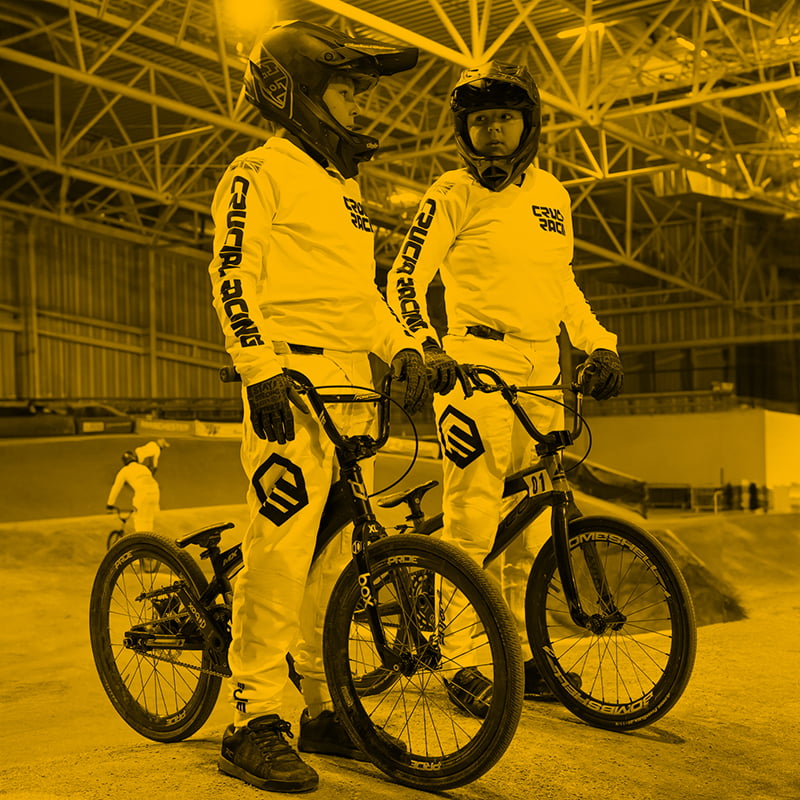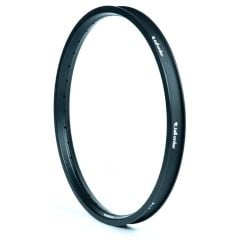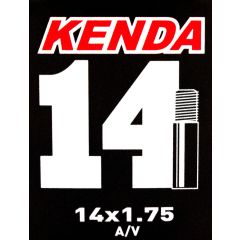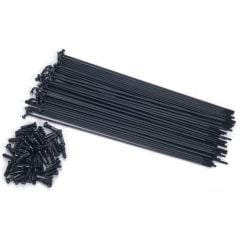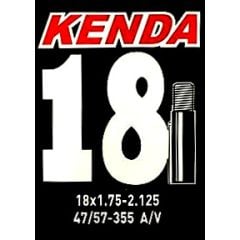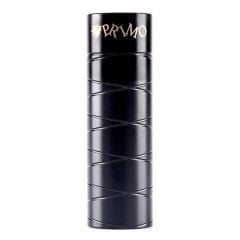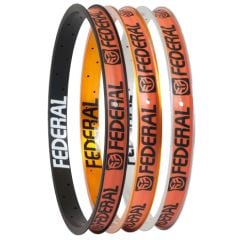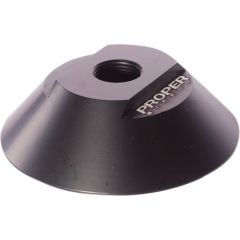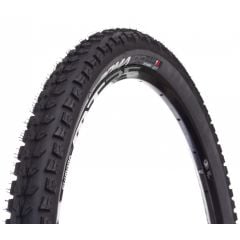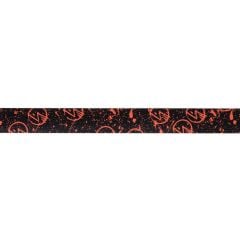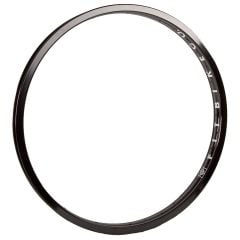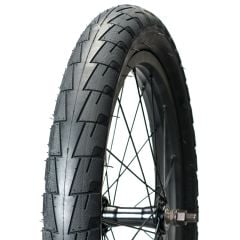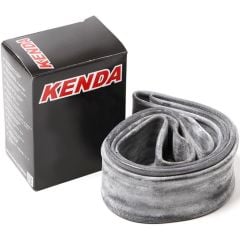Eclat Cortex Freecoaster Hub
When the team asked for a simple, durable freecoaster hub with a larger slack setting than most, we got to work on developing something totally new. ... Read More
When the team asked for a simple, durable freecoaster hub with a larger slack setting than most, we got to work on developing something totally new. The Eclat Cortex Freecoaster takes the tried and tested clutch style internals, and addresses ALL of the problems that those hubs had infamously been plagued with in the past. For 2017 this hub includes our Viper nylon-fibreglass hubguard.
Lets break it down for you?
“Yes it crankflips!”. The first issue was the internal friction mechanism. A typical Clutch system hub uses x2 small balls on springs to apply friction to the inside of the hub shell, allowing the hub to engage. These small balls often wear out, causing damage to the hub and eventually end up in the hub slipping and cease working. We took this system and modified it to use x3 points of friction which is not only incredibly durable but also more stable than other clutch style freecoasters. After research and testing, we worked out that we could apply stable friction to a much larger section of the clutch, rather than just at x2 points like a regular classic KHE style hub. This makes the hub much more durable and will require next to maintenance.
The biggest issue with clutch style freecoasters was always that they generated “play” over time. When the clutch threads into the driver, it acts like a vice and clamps the large drive side hub bearing, and ultimately will cause large loads on that bearing causing it to weaken and become loose. We solved this issue by using a special “stopper ring” which sits freely behind the bearing, preventing the clutch from passing a certain point and putting load on the bearing and destroying it. This special part really give the Cortex a huge advantage over other hubs, and enables you to give it as much side impact as possible, without the hub generating play.
Our team asked for a hub with a large slack setting, so the Cortex comes out of the box with just under 1/4 crank of slack, however this is fully adjustable and can be made much smaller by adding small spacers behind the clutch, which are included with the hub. After 2 years of heavy testing, we still have team riders riding the Cortex hub as good as it was the day it was laced up
- Material: 6061-T6 alloy hub-shell
- Axle: 14mm hollow bore, male axle, hardened heat-treated crmo
- Bearings: 2 high quality bearing and bushing driver, high performance durable bearings in hub shell.
- Spokes: 36h
- Colors: black, high polished, satin oilslick
- Driver: 9t, driver features x2 bearings and polymer bushing
- Updated 3 point internals
- Allen key inner axle for easy maintenance
- Adjustable slack
- Includes eclat Viper nylon-fibreglass hubguard
- Weight: 671g (23.6oz).
- Colour: Black
- Lead Time: 0
New Rider?
Choosing the correct bike for your discipline is extremely important, and sometimes for those new to the sport it can be difficult to know or decide, so we’ve broken down the main differences to help you make a decision.
Freestyle bikes are designed for the skatepark, the streets or the trails. They are constructed from strong, hard wearing materials and usually feature Steel or Chromoly frames. This means that the bike can stand up to a certain amount of impacts and hard landings, but remember no bike is indestructible. For riders looking to learn tricks and stunts, then a freestyle bike is the correct choice.
Race bikes are designed specifically with the track in mind, they are nimble lightweight machines for putting down quick lap times. Typically, they are constructed from lightweight materials like aluminium and carbon fibre to keep the weight down and the rider at the front of the pack. These bikes are strong enough for smooth landings on race and pump tracks but will not take the abuse that a freestyle bike would in concrete skateparks. If you’re looking to set fast lap times or begin your competitive career on the track, a race bike is the right choice.
Choosing the correct size BMX bike is very important, bikes that are too large will be cumbersome and hard to manoeuvre and bikes that are too small can feel cramped and hard to keep under control.
Youth freestyle bikes are sized depending on the diameter of the wheel staring at 12” all the way through to 18”, at a 20” wheel the bike is considered an adult size. Adult freestyle bikes are sized on top tube length, a 18.5” top tube is extra small for younger teenagers who have just moved up to an adult bike, a 20” top tube is small, 20.5” a medium and anything over a 21” is considered large.
Race bikes feature 20-inch wheels on all models, but the components and frame are sized dependent on age and height. Youth race bikes start from a Micro size for very young riders and offer a range of sizes through to expert XL. Pro size and upwards are considered adult bikes and are usually offered up to a Pro XXXL or larger for very tall riders.
We recommend consulting our height charts from the link below to help you choose your perfect sized bike:
Choosing the right level bike for your riding ability is important. Components that are not suitable for your level of riding can wear or fail much sooner than expected. Although BMX bikes can look very similar, under the surface components and materials used can vary greatly.
All our bikes are cherry picked from the very best BMX specialist brands, and all our bikes are designed specifically for use at the skatepark or on the track.
FREESTYLE BIKES
For first time riders new to the sport our entry level bikes, priced from £200-£400, are perfect, most of these are made from high tensile steel which means they are still relatively strong, but can be slightly heavier than higher end models. You might find you’ll want to upgrade to something lighter sooner than you’d think. If you are planning on using the bike in rain or bad weather, we do strongly advise choosing a model with fully sealed bearings all round.
If you are already confident on a bike and have some experience in skateparks or performing tricks and jumps then we would recommend choosing a mid-range bike, priced from £400 to £700, with a full Chromoly frame, fork, and bars. This will be lighter and stronger than an entry level model.
For an experienced person that is already capable of performing most tricks and has previously owned BMX bikes then a high-end complete bike, or full custom would be suggested to meet the demands of this rider, these bikes are priced from £700 plus.
RACE BIKES
Our range of entry level race bikes are perfect for first time racers, usually priced between £200 and £400 most of these are constructed of heavier steel rather than aluminium. These are great to get a feel for the sport but would not be able to keep up in a competitive environment.
Our mid-range race bikes are the perfect for riders who are beginning their path to competitive racing. Priced between £400 and £800 these are not quite the high-end steeds you see at national level races, but they all feature lightweight aluminium frames and are designed specifically with the racetrack in mind.
For experienced riders who are already racing confidently at a competitive level we offer a small range of high-end complete bikes. These are usually priced between £800 and £1500 and feature many aftermarket components like carbon forks, disc brakes and folding tyres. However, at this level we highly recommend building a full custom bike, usually costing between £1500 and £3000 all components can be chosen specifically with the rider in mind. For help on building a custom bike give us a call or drop us an email!
One of our most frequently asked questions in freestyle is, which rear hub do I want, a freecoaster or a cassette? Most experienced riders know their preference, but if you’re new to the sport it can be difficult to know which choice to make.
The main difference between the two is the way the bike performs when going backwards. A traditional cassette hub requires the rider to pedal in time with the rotation of the wheel while travelling backwards, while a freecoaster allows the rider to travel backwards while keeping the pedals level in the same position as riding forwards.
Although this may seem like a brilliant feature, it does come at a price! Freecoaster hubs feature a “Slack” before engagement while pedalling forward. This means that you can turn the crank a set amount (Usually an adjustable amount) before the drivetrain engages. This is referred to as the “Slack”, when riding backwards you must keep your feet positioned within the slack, if your pedals rotate too much the drivetrain will engage and your pedals will start to rotate. The smaller the slack, the harder it is to keep your pedal positioned within it while riding backwards. This means that certain tricks are harder to perform, especially those that rely on pedal pressure, for example Tire Taps.
